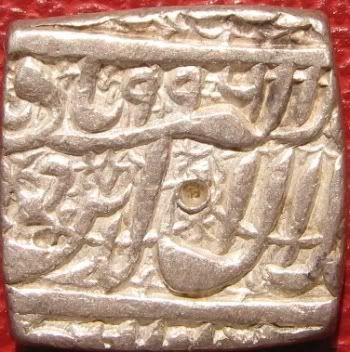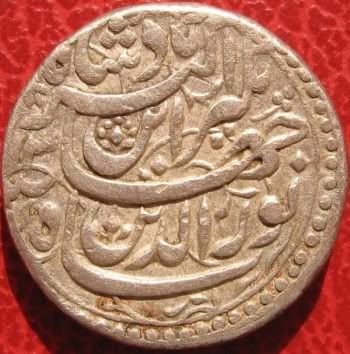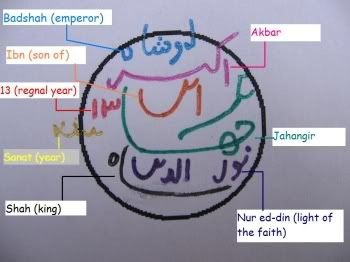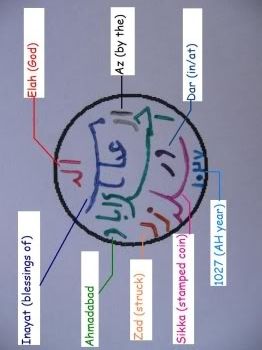Originally, all coins issued by Akbar were round. Square silver and gold coins were issued (along with the round ones) for a short period, between 993 and 998 AH (i.e., regnal years 30 and 35). Almost all coins issued after 998 AH are round.
Variation is also found in the inscriptions on the coins. Till about 1585 AD (reynal year 29), gold and silver coins had Kalima (holy verses) inscribed on the obverse, along with the names of the four caliphs. The emperor's name (Jalaluddin Muhammad Akbar Badshah Ghazi) appeared on the reverse (with or without titles), with the pious wish
Khald Allah talah Mulk wa Saltanat, the mint name, and the Hijri year.
It appears that the Hijri year appeared on the coins in a regular manner till 988 AH, after which the word Alif was inscribed on the subsequent coins of most mints to represent 1000. On these coins, the name of the mint was replaced by Urdu zafar quarin (camp associated with victory). All this continued till 1585 AD, after which the change in Akbar's religious views was reflected in his coinage. The Kalima was replaced with the Ilahi creed "Allah Akbar Jalla Jalalah" (though not all mints used this formula). Name and titles of the emperor were not used on the subsequent coins, as he probable preferred to remain anonymous (though it may be argued that his name lies in the pun Allah Akbar).
Obverse Kalima (
La' illaha illa' Allah, Muhammad ar Rasool Allah; There is no God but God, Muhammad is his Prophet)
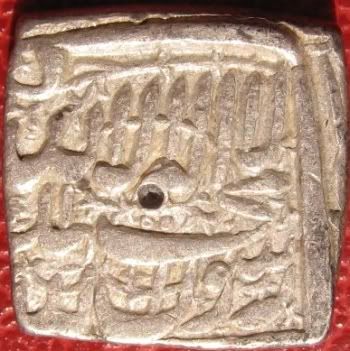 Reverse Khald Allah talah Mulk wa Saltanat 996
Reverse Khald Allah talah Mulk wa Saltanat 996 (May Allah on high perpetuate his kingdom 996)
Mohammad Akbar Badshah (Mohammad Akbar Emperor)
Jalal ed-din Ghazi (Glory of the faith, fighter against the infidels)
Zarb das es sultanate Ahmadabad (Struck at the Seat of the Sultanate, Ahmadabad)
